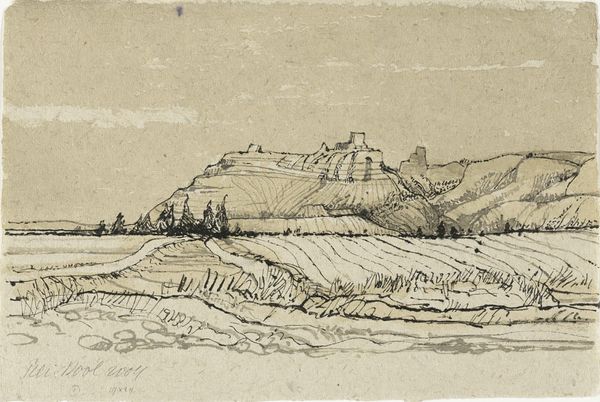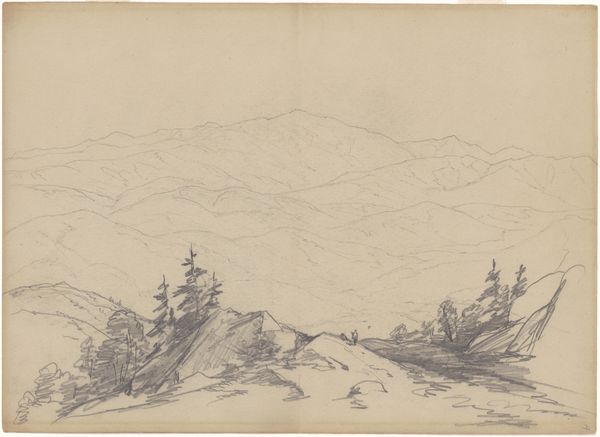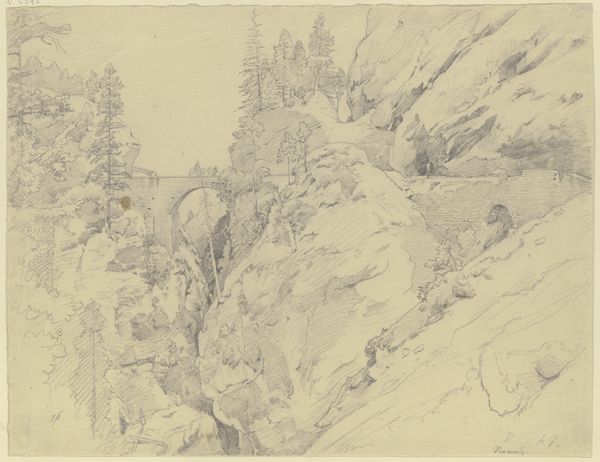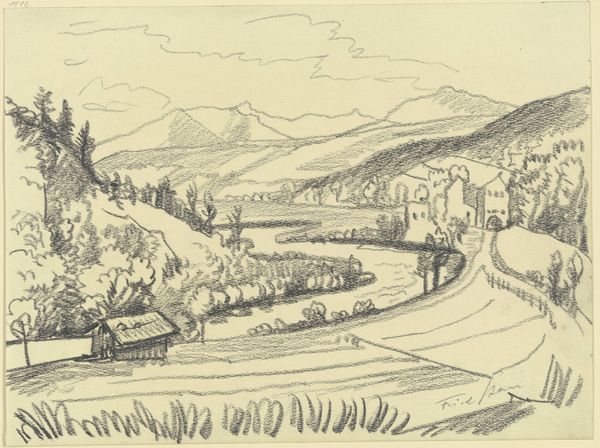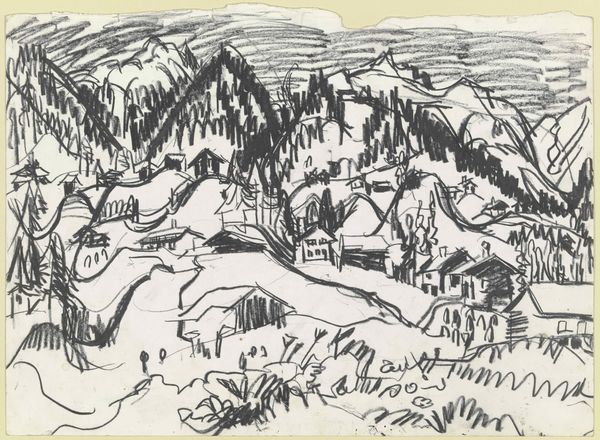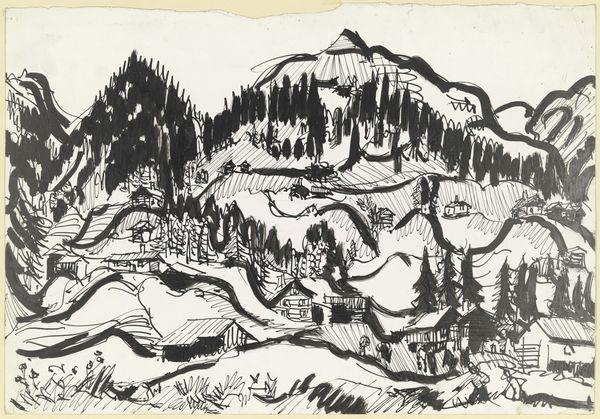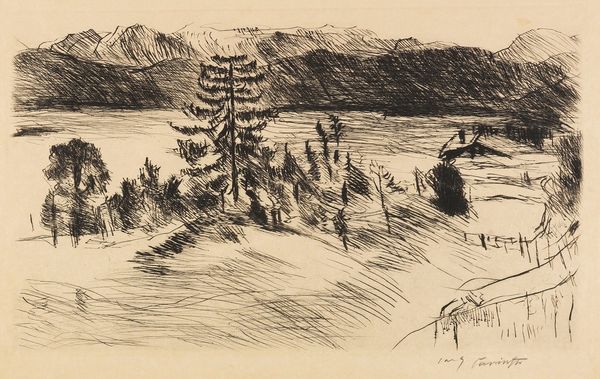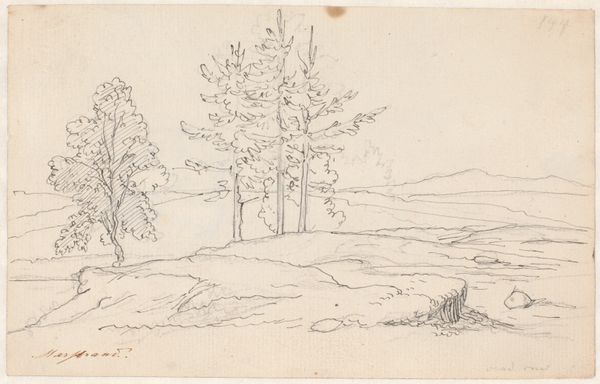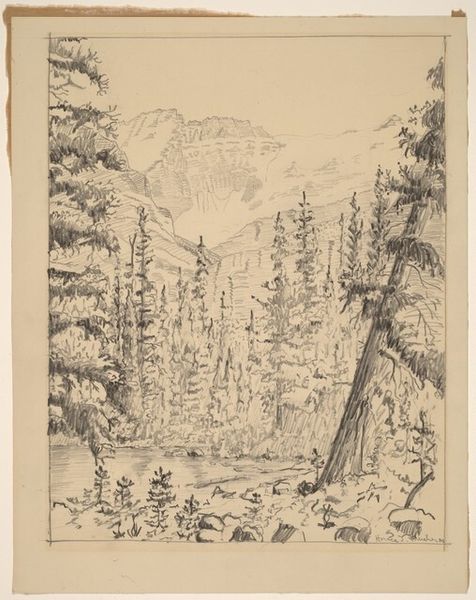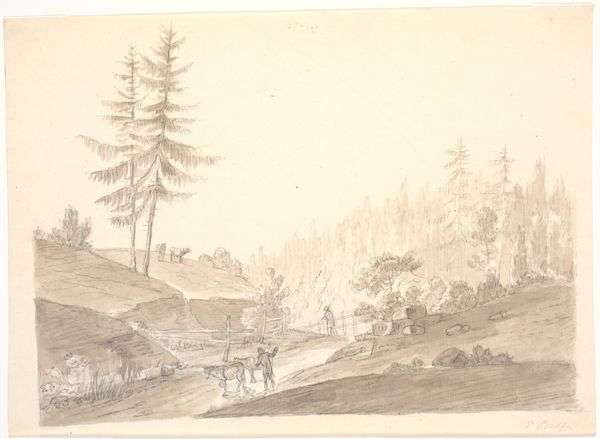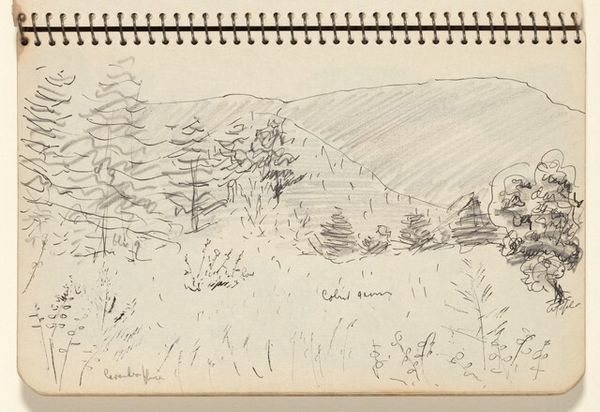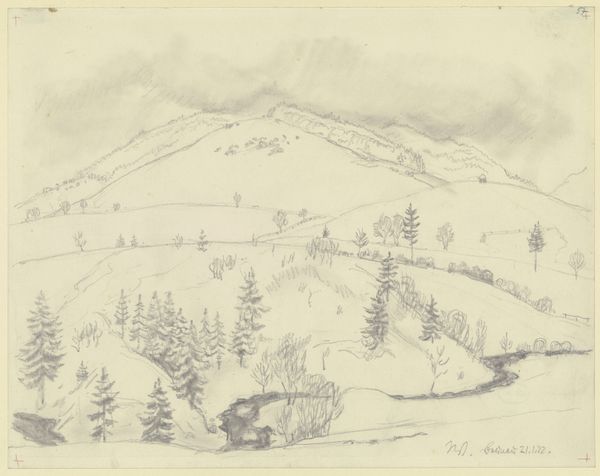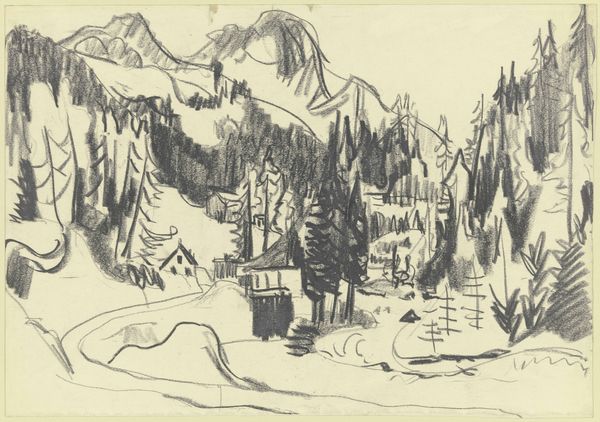
Copyright: Public Domain
Curator: Let’s consider Fried Stern’s 1930 drawing, "Einödbach im bayrischen Allgäu," a landscape captured with pencil on paper. It's currently held here at the Städel Museum. Editor: It has a kind of hushed and austere feel. The strokes are so sparse, economical even. You get a strong sense of place with what feels like minimal effort. It feels raw and exposed somehow, like a quick sketch of the region. Curator: Absolutely. Given Stern’s history as a Jewish artist in Germany during the rise of Nazism, such works are loaded with the political context of the period. It's a visual shorthand of identity and belonging being circumscribed, a cultural landscape soon to be utterly transformed. Editor: The seeming simplicity belies a careful material choice. A readily available pencil and simple paper meant art production, even a fugitive sketch like this, could continue amidst intense constraints. The means were modest, but adequate, it speaks volumes about how art continued, in spite of what was going on. It makes you wonder about how easily transported and circulated pieces on paper are, what use they served at the time. Curator: Precisely, this piece can also be seen as an act of resistance, a claim on cultural heritage in a time when Jewish identity and presence were being actively erased. And, even if unconscious, that use of readily available material speaks volumes about Stern's ingenuity. Editor: There is such directness here that feels distinctly human. It doesn’t get bogged down in fine details. The work foregrounds an act, or process, instead. It doesn't celebrate the land; it records a response to place in difficult times. Curator: The emotional power lies, for me, in that understated resilience. It stands as a testament to individual identity refusing erasure, inscribing itself onto the very fabric of the land that sought to reject it. Editor: I concur, that commitment to a singular moment of observing nature, and documenting it in an art making capacity in a tangible manner, underscores that art’s inherent value lies in its process of construction and material embodiment rather than solely on historical contextualization.
Comments
No comments
Be the first to comment and join the conversation on the ultimate creative platform.
